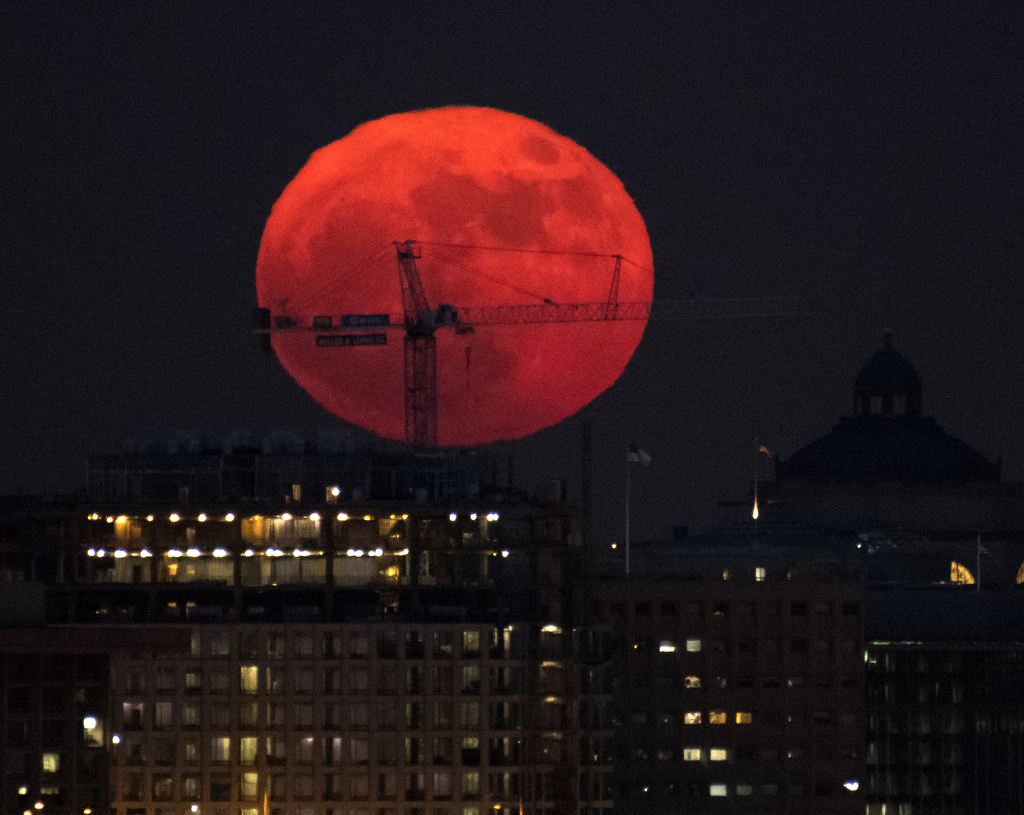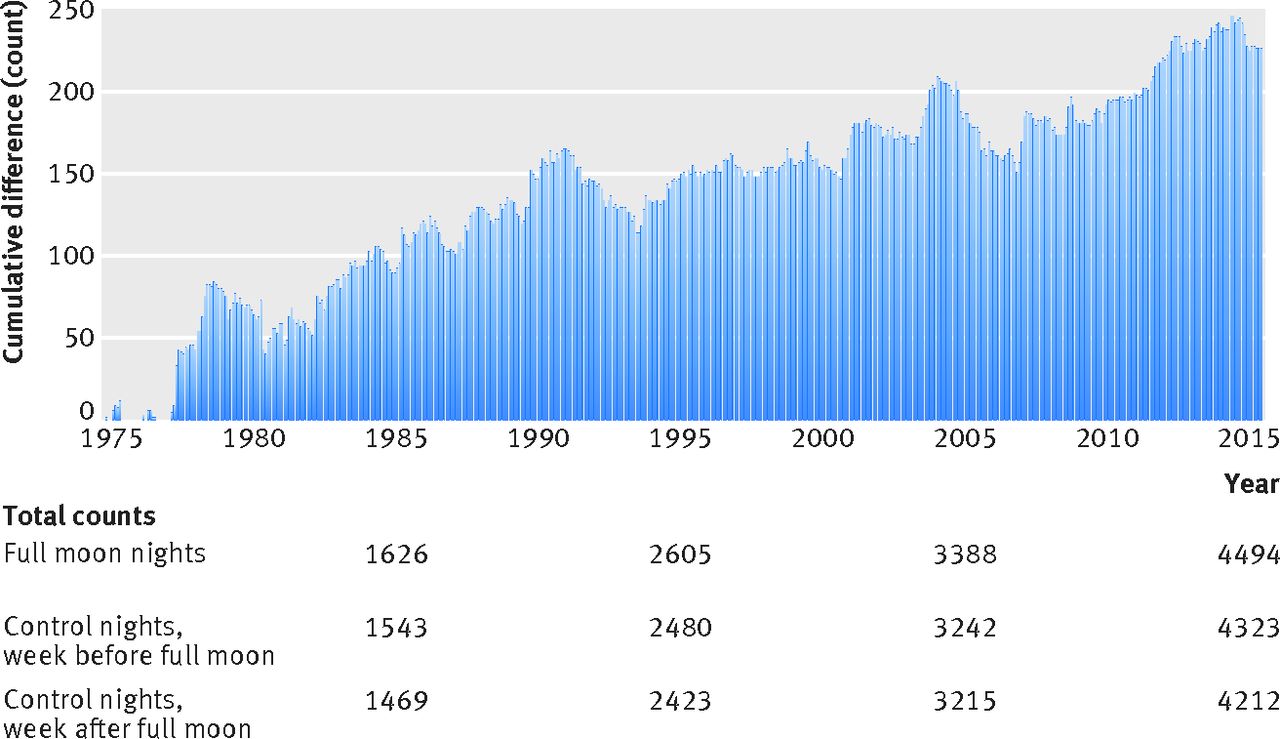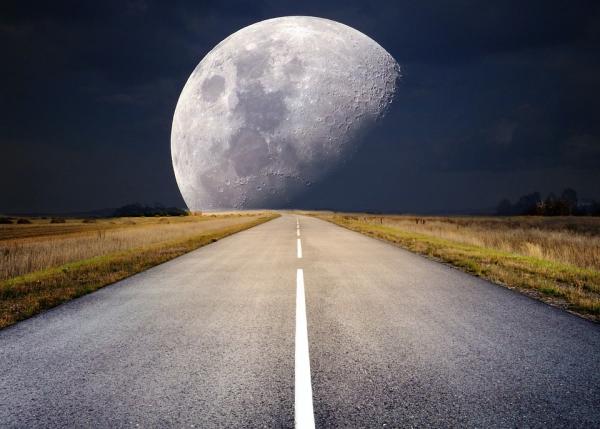More motorcyclists die in the United States when riding at night under a full moon.
A recent study analyzing decades of data show this to be the case, so it's not conjecture. But what is not absolutely known is whether full moons – and the attention they possibly draw away from a motorcyclist's main safety task – are the cause of the higher incidence of fatal accidents.
It was determined that over a 40-year period, during nights when a full moon was overhead, deadly accidents increased by 5 percent. Consulting detailed information gathered by the National Highway Traffic Safety Administration, researchers at the University of Toronto studied the circumstances surrounding more than 13,000 fatal, nighttime crashes between the years 1975 and 2014 and came away with this correlation.
However, a direct link was not established; the conclusion of the recent study, published in the British Medical Journal, stated that the "full moon is associated with an increased risk of fatal motorcycle crashes, although potential confounders cannot be excluded." Given all the other potential distractions and road-based hazards, this makes sense.
 But still, when a so-called "supermoon" was present – which is rarer, and its orbit brings it closer to the Earth than a full moon (as seen in the adjacent NASA photo of Washington, DC on Dec. 3) – researchers found motorcycle deaths spiked by 32 percent. That alarming rise in this subset group of full moons provides added weight to the speculation that this celestial body is a very real distraction to those piloting a motorcycle.
But still, when a so-called "supermoon" was present – which is rarer, and its orbit brings it closer to the Earth than a full moon (as seen in the adjacent NASA photo of Washington, DC on Dec. 3) – researchers found motorcycle deaths spiked by 32 percent. That alarming rise in this subset group of full moons provides added weight to the speculation that this celestial body is a very real distraction to those piloting a motorcycle.
Several crash factors could be at play: a sudden burst of brightness for a rider when making a turn, causing a distraction; or a change in lighting that could make a motorcyclist "misjudge distance and speed," according to researchers. But even without a direct connection explaining exactly why more accidents take place, their message is to be extra cautious when full moons rise.
The study's lead author Donald Redelmeier says that "our key recommendation is that extra care is needed when riding a motorcycle under a full moon,” in a statement on the university's website, adding that the "research serves as a safety reminder to the millions of people who ride a motorcycle, and the millions of others who do not, that small gaps in attention can lead to irreparable consequences."
At just over 12 full moons per calendar year (given they occur every 29.5 days, or more than once per month), researchers counted 494 full moons over the 40-year study period, and 4,494 fatal accidents that occurred on those nights. By comparison, establishing two controls, they also tallied the number of fatal crashes taking place exactly one week before the full moon and one week after, arriving at 8,535. As such there were twice as many control nights as full moon nights, or 988.

This approach "indirectly reduced confounding from differences in training of the motorcyclists, traffic enforcement, individual personality, road design, vehicle condition, healthcare access, and many other influences on crash deaths," the authors wrote. "Validation of this approach appears elsewhere in analyses of road traffic risks surrounding large societal events."
The incidence of fatal crashes under a full moon were 9.10 per night, while on nights without a full moon the rate was 8.64. "Comparisons yielded a relative risk of 1.05 associated with the full moon," the researchers stated, or an increased fatality rate of 5 percent.
As for the 65 supermoon nights over these four decades, there were 703 fatal crashes, or 10.82 per night. When compared to the 8.84 nightly rate during a "regular" full moon, there was a 22 percent increase. Further, "[r]estricting analyses to the 65 supermoon nights and 130 corresponding control nights yielded a relative risk of 1.32," or a 32 percent increase.
As everyone knows, riding a motorcycle is inherently dangerous, yet it remains a popular activity. Unlike in a car, the lack of a protective cabin can turn any high-speed accident into a fatal crash. Therefore, from a safety standpoint it's essential to keep distractions to an absolute minimum. So, if you ride during a full moon it simply makes sense that – despite the provable link – you keep your eyes on the road and away from shiny things above the horizon.




